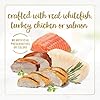Choosing a cat for your home is an exciting decision. With so many options available, you may find yourself wondering whether a mixed breed or a purebred cat is the better fit. While both types can make incredible pets, they come with different characteristics, traits, and considerations that may sway your choice. In this article, we’ll explore the differences between mixed breed and purebred cats, including their health, temperament, costs, and more, so you can make an informed decision on which cat best suits your lifestyle.
What Are Mixed Breed Cats?
A mixed breed cat, sometimes referred to as a “moggie,” is a cat that doesn’t belong to any specific breed. These cats can have a wide range of physical appearances and temperaments, as they come from a diverse genetic background. Whether born on the streets or from unplanned matings, mixed breed cats are unique in every sense.
Popular Mix Breed Cats
| Breed Type | Description |
|---|---|
| Tabby Mix | Striped coat, can be short or long-haired. Common in colors like orange, gray, and brown. |
| Tortoiseshell Mix (Tortie) | Mix of black, brown, and orange fur, often with a mottled pattern and deep shine. |
| Calico Mix | Tricolor coat with white, orange, and black patches. Can be short or long-haired. |
| Maine Coon Mix | Large size, fluffy fur, often with tufted ears and bushy tail. Retains Maine Coon’s characteristics. |
| Siamese Mix | Sleek body, pointed color pattern, and striking blue eyes. May vary in coat length and color. |
| American Shorthair Mix | Known for their round faces and short coats. Typically friendly and easygoing. |
| British Shorthair Mix | Stocky build with round faces, they often have thick coats and a calm temperament. |
| Ragdoll Mix | Friendly and docile, large size with semi-long fur. Known for their relaxed nature. |
| Persian Mix | Fluffy coat and a sweet demeanor, may have a more relaxed or calm temperament. |
| Abyssinian Mix | Agile and playful, known for their ticked coat and energetic personality. |
| Russian Blue Mix | Sleek gray coat and green eyes, typically calm but independent. |
| Bengal Mix | Wild-looking spotted coat, active and intelligent, loves stimulation and exercise. |
| Scottish Fold Mix | Distinctive folded ears, typically friendly and gentle. |
| Exotic Shorthair Mix | Short-coated version of the Persian, known for their affectionate nature and sweet temperament. |
| Manx Mix | Known for being tailless or short-tailed, friendly and playful personality. |
| Sphynx Mix | Hairless, active, and social cats, known for their affectionate and demanding nature. |
| Turkish Van Mix | Semi-long coat, loves water, energetic, and playful. |
| Oriental Shorthair Mix | Sleek coat and a playful, curious personality, often vocal. |
| Birman Mix | Semi-long fur, striking blue eyes, and a gentle, affectionate nature. |
| Chausie Mix | Wild-looking, with a hybrid mix of jungle cat and domestic cat, active and energetic. |
Characteristics of Mixed Breed Cats:
- A Truly Unique Look: One of the most exciting aspects of mixed breed cats is their appearance. Since their lineage is varied, they don’t conform to any breed standard, making each cat a little different. Whether they have short or long fur, fluffy tails, or striking patterns, no two mixed breed cats are ever the same.
- Varied Temperaments: The personality of a mixed breed cat is equally diverse. While some may be laid-back and independent, others could be highly affectionate or playful. Because they aren’t bred to fit specific personality traits, their behavior can vary greatly.
- Healthier Cats: One of the greatest advantages of mixed breed cats is their overall health. Due to their genetic diversity, they’re less likely to develop the hereditary conditions that sometimes affect purebreds. This is commonly referred to as “hybrid vigor,” and it results in a generally healthier and more resilient pet.
- Longer Lifespan: Generally speaking, mixed breed cats tend to live longer than purebreds. Their lack of inbreeding contributes to a lower risk of genetic health problems, and with proper care, they can live into their late teens or even early twenties.
Why Adopt a Mixed Breed Cat?
- Adoption Saves Lives: Many shelters are filled with mixed breed cats waiting for a home. By adopting, you give a homeless cat the chance for a better life, reducing the number of animals in need of rescue.
- Affordable: Adopting a mixed breed cat tends to be more cost-effective than purchasing a purebred. Adoption fees are generally lower, and the price often includes vaccinations, spaying or neutering, and microchipping.
- Health Benefits: Because mixed breed cats have a diverse genetic pool, they are typically healthier and less prone to hereditary diseases. They are less likely to suffer from issues like respiratory problems, joint pain, or heart conditions that can sometimes affect purebred cats.
- Low Maintenance: Depending on the cat’s breed history, mixed breed cats can be easier to care for. You might not have to worry about things like excessive grooming (depending on the coat length), and many mixed breeds adapt well to indoor or outdoor living.
What Are Purebred Cats?
Purebred cats, as the name suggests, come from a specific, registered breed with a well-documented lineage. These cats are bred with the goal of maintaining certain characteristics, whether it be appearance, behavior, or even specific traits like color patterns. Purebreds are recognized and regulated by various cat organizations, such as the Cat Fanciers’ Association (CFA) or The International Cat Association (TICA).
Popular Purebred Cats:
| Breed Type | Description |
|---|---|
| Siamese | Sleek body, blue eyes, and a vocal, social personality. |
| Maine Coon | Large, friendly, and playful with tufted ears and long, thick coats requiring regular grooming. |
| Persian | Long, luxurious fur with a calm temperament, but requires frequent grooming to avoid matting. |
| Bengal | Leopard-like spotted coat, highly active, and intelligent, requiring ample stimulation. |
| Ragdoll | Large, docile cats known for their calm nature and tendency to go limp when picked up. |
| Sphynx | Hairless, unique appearance, outgoing, and demands attention from owners. |
| British Shorthair | Round face and stocky build with a calm, independent temperament. |
| Abyssinian | Highly active, with a sleek, ticked coat and intelligent, playful nature. |
| Burmese | Muscular build with a friendly, affectionate personality, and a sleek coat. |
| Scottish Fold | Famous for their folded ears, typically sweet-tempered and affectionate. |
| Exotic Shorthair | Short-haired version of the Persian, with a calm, affectionate temperament. |
| Russian Blue | Sleek blue-gray coat and green eyes, calm, and gentle personality. |
| Norwegian Forest Cat | Large, rugged cat with a thick coat, known for their friendly and independent nature. |
| Devon Rex | Short, curly coat and large ears. Known for their playful and social temperament. |
| Birman | Semi-long coat, blue eyes, and affectionate nature, often described as a “dog-like” personality. |
| Himalayan | A Persian and Siamese mix with a calm temperament and striking blue eyes. |
| Oriental Shorthair | Sleek, elegant cats with a curious, energetic personality and a variety of coat colors and patterns. |
| Tonkinese | A cross between Burmese and Siamese, with a playful and affectionate nature. |
| Chartreux | French breed, known for their blue-gray coat, golden eyes, and calm, friendly personality. |
| Singapura | Small but muscular, this breed is playful and affectionate, with a unique appearance. |
Why Choose a Purebred Cat?
- Predictability: One of the main advantages of choosing a purebred cat is the predictability of its traits. If you want a cat with specific characteristics—whether it’s a certain look or personality—purebreds are more likely to meet your expectations.
- Known Temperament: Many purebred cats are bred for specific temperaments. For example, Siamese cats are known for being vocal and outgoing, while Persians are often laid-back and calm. If you’re looking for a particular type of cat personality, a purebred is a safer bet.
- Show Cats: If you’re interested in cat shows or competitions, purebred cats are the only option. Breeders carefully cultivate show-quality traits, and purebreds are bred to meet the strict standards of these competitions.
- Health Testing: Reputable breeders often conduct health tests to minimize the risk of hereditary conditions, though it’s important to remember that some breeds are more susceptible to genetic disorders.
Challenges with Purebred Cats:
- Higher Cost: Purebred cats can be expensive, with prices ranging from hundreds to thousands of dollars depending on the breed. Additionally, purebred cats may require more veterinary care due to inherited health conditions.
- Health Concerns: Purebred cats are sometimes more prone to genetic issues. For instance, Persian cats may suffer from breathing difficulties due to their flat faces, and Maine Coons are at risk of heart disease.
- Long Waiting Lists: If you have your heart set on a specific breed, you may have to wait for months or even years to find the right kitten from a breeder. The demand for certain purebred cats can be high, which leads to longer waiting periods.
Mixed Breed Cats vs Purebreds
Here’s a comparison to highlight the major differences:
| Aspect | Mixed Breed Cats | Purebred Cats |
|---|---|---|
| Cost | Generally more affordable, especially when adopted from shelters. | Can be expensive, ranging from hundreds to thousands of dollars depending on the breed and breeder. |
| Health | Generally healthier due to genetic diversity and fewer hereditary health issues. | Prone to inherited health problems specific to the breed. |
| Lifespan | Often longer due to genetic diversity and fewer breed-specific diseases. | Varies by breed, but may have shorter lifespans due to genetic health concerns. |
| Appearance | Highly variable in appearance, with no set breed standards. | Predictable appearance with consistent traits according to breed standards. |
| Temperament | Can be unpredictable, with a range of behavior types from calm to energetic. | More predictable based on breed traits (e.g., affectionate Ragdolls, independent British Shorthairs). |
| Maintenance & Grooming | Grooming needs vary, depending on coat type; generally lower maintenance. | Varies by breed; long-haired breeds like Persians need regular grooming. |
| Availability | Easily found in shelters, rescues, and as strays. | Typically available from breeders, may have long waiting lists for popular breeds. |
| Special Needs | No specific care requirements, but each cat’s personality and needs vary. | Some breeds have specific dietary or health needs (e.g., high-protein diet for Bengals). |
| Adoption & Ethics | Often adopted from shelters, helping reduce the number of homeless cats. | Buying from breeders should be done ethically, with careful selection of reputable breeders. |
| Genetic Diversity | High, reducing the risk of inherited diseases. | Limited genetic diversity, increasing the risk of breed-specific diseases. |
When it comes down to choosing between a mixed breed cat and a purebred cat, it’s essential to consider factors like your lifestyle, preferences, and budget. If you’re looking for a specific breed with a predictable temperament and look, a purebred may be the way to go. However, if you’re looking for a unique, often healthier cat, adopting a mixed breed might be a perfect fit.
Both types of cats can bring immense joy and companionship into your life. Regardless of whether you go for a purebred or a mixed breed, the most important thing is to choose a cat that fits your home and heart. And remember, adopting from a shelter is always a great option, offering a second chance to a cat in need.































































